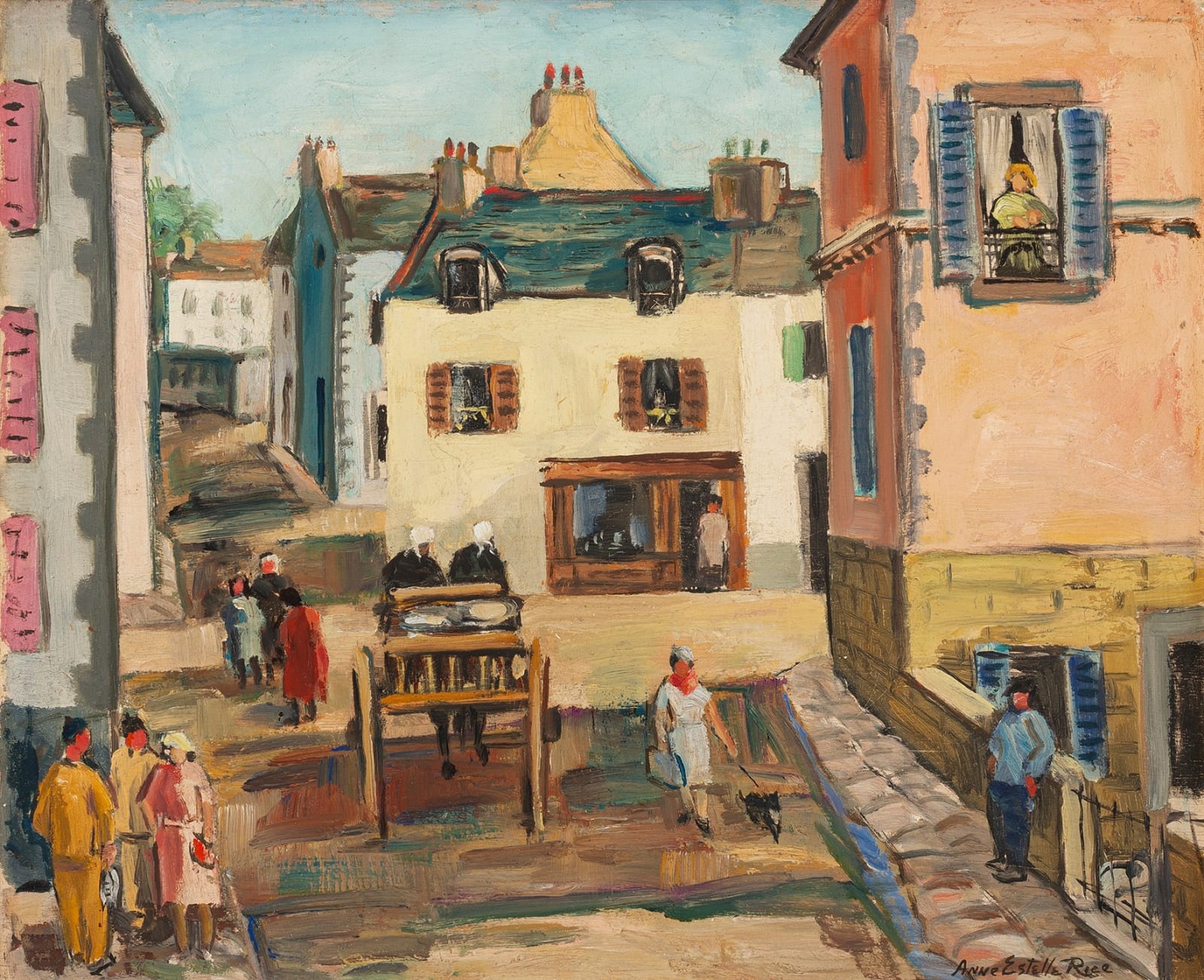Anne Estelle Rice
Street with Horse and Trap, circa 1940
Oil on panel
13 x 16 in / 33 x 40.5 cm
Signed 'Anne Estelle Rice' (lower right)
Anne Estelle Rice began her career as an illustrator for the Wannamaker Store, having graduated from the School of Industrial Art of the Pennsylvania Museum of Art in 1887 with...
Anne Estelle Rice began her career as an illustrator for the Wannamaker Store, having graduated from the School of Industrial Art of the Pennsylvania Museum of Art in 1887 with a focus on decorative painting and applied design. In 1899, she enrolled in a Fine Art course to develop her figure drawing and painting practice, with growing inspiration from Impressionist artists. Despite the hurdles of being a female artist at the time, Rice achieved much success as an illustrator and in 1905 was stationed in Paris by the North American newspaper, to capture the new trends and alluring high fashion of Parisian life. Rice created intensely colourful works over this time, drawing inspiration from the French Fauvist and Post-Impressionists who applied vibrant pigments to their works.
Rice continued to create landscape, still life and figurative paintings throughout the 1900s however, after moving back to the United States during the uncertainty of World War One, coupled with her own domestic and family responsibilities, Rice’s output and gallery demand began to wane. While the 1920s held greater success, between 1925 and 1940 Rice’s own interest in commercial endeavours lessened once more. In the 1940s she began exhibiting in larger exhibitions, including London’s Leicester Gallery’s mixed summer shows.
Street with Horse and Trap demonstrates Rice’s move away from ‘artificial’ Fauvist colours, to painting with a more naturalistic palette. Still heavily inspired by light, the oil shows Rice’s rich application of paint layers which emulate the intense warmth of the sun, reflected on the pastel-coloured houses. It is thought that Rice painted this work during the Second World War but composed the piece from her earlier sketches.
Rice continued to create landscape, still life and figurative paintings throughout the 1900s however, after moving back to the United States during the uncertainty of World War One, coupled with her own domestic and family responsibilities, Rice’s output and gallery demand began to wane. While the 1920s held greater success, between 1925 and 1940 Rice’s own interest in commercial endeavours lessened once more. In the 1940s she began exhibiting in larger exhibitions, including London’s Leicester Gallery’s mixed summer shows.
Street with Horse and Trap demonstrates Rice’s move away from ‘artificial’ Fauvist colours, to painting with a more naturalistic palette. Still heavily inspired by light, the oil shows Rice’s rich application of paint layers which emulate the intense warmth of the sun, reflected on the pastel-coloured houses. It is thought that Rice painted this work during the Second World War but composed the piece from her earlier sketches.
Provenance
Anthony Bilmes, 1978.Hayes Gallery, Perthshire, Scotland.
The Annexe Gallery, London (inventory no. 274).
Hollis Taggart Galleries, New York, where acquired by the present owner, 13 January 1998.
Exhibitions
London, Annexe Gallery, Anne Estelle Rice 1875-1959, 1978, no. 17.New York, Hollis Taggart Galleries, The Expressive Fauvism of Anne Estelle Rice, April - July 1997, no. 36.
